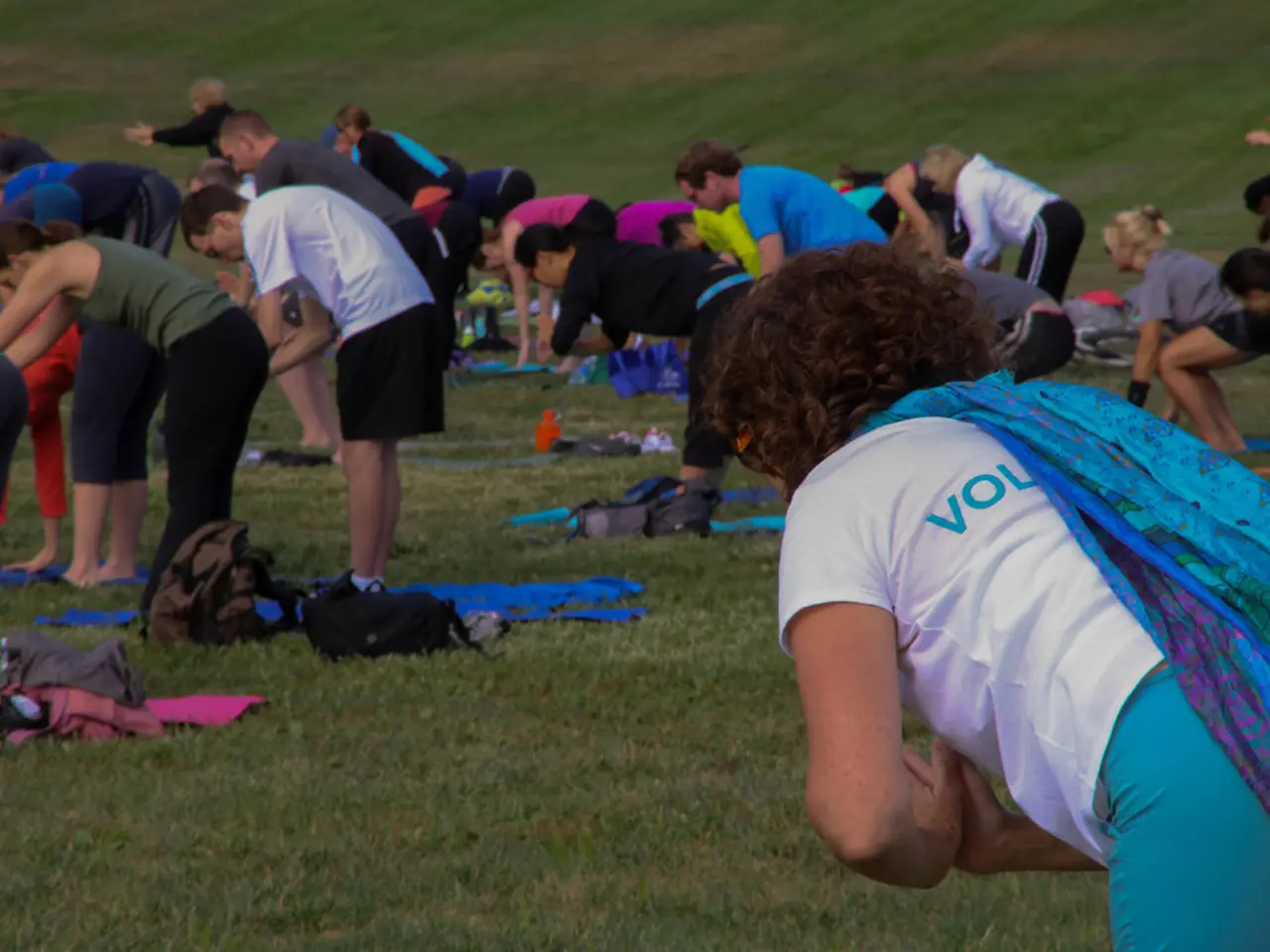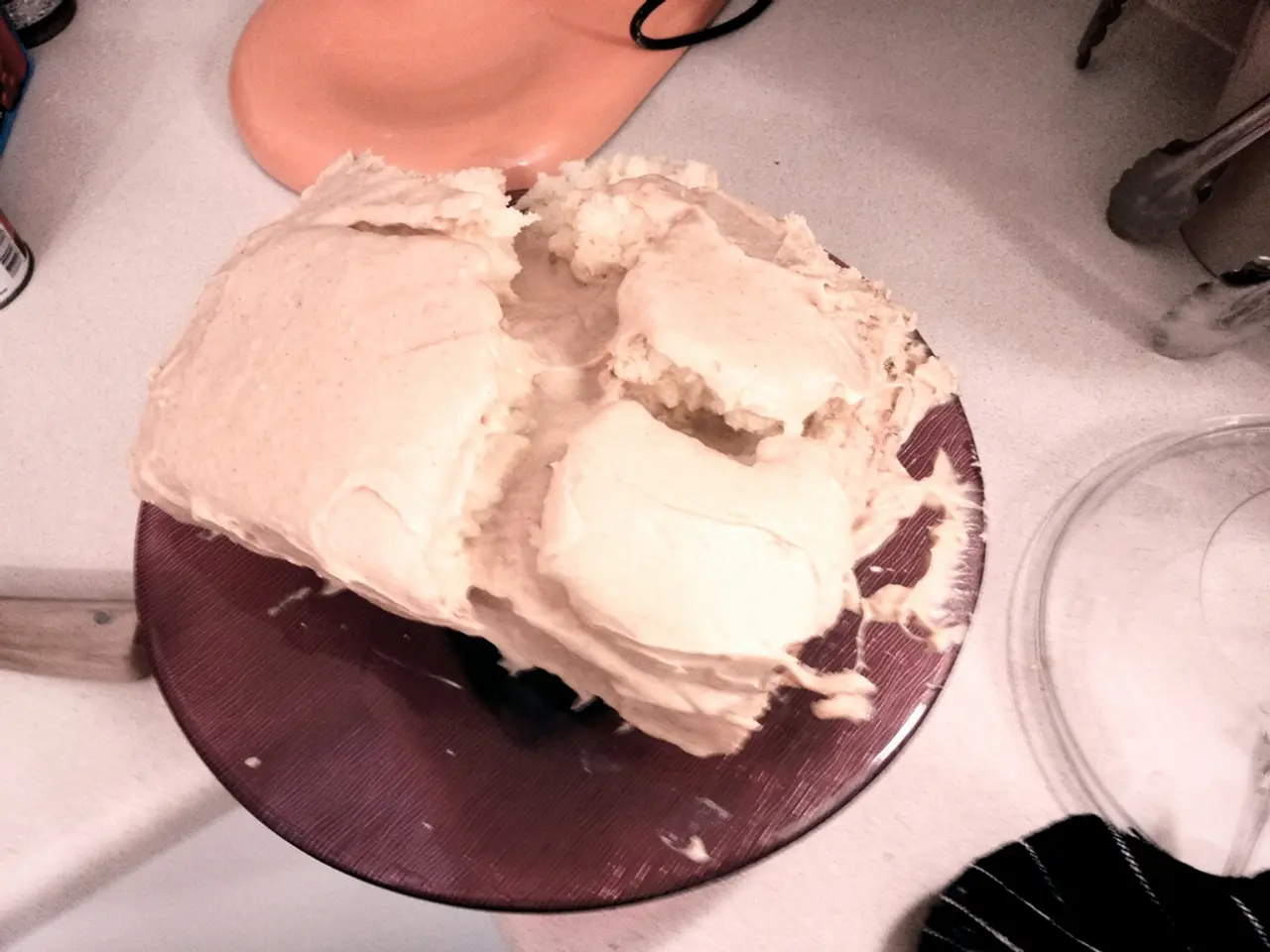Relieving Stress Through Yoga: 9 Soothing Poses to Alleviate Pressure and Tension
In today's fast-paced world, stress is an unfortunate reality for many. Long work hours, social obligations, family responsibilities, and an ever-growing to-do list can take a toll on our mental and physical well-being. But fear not, for a simple and accessible solution exists: yoga.
Yoga is more than just a physical exercise; it's a holistic practice that addresses the mind and body as a whole. By slowing breath, reducing heart rate, loosening muscle tension, and shifting brain activity away from stress-related areas, yoga offers a science-backed approach to stress relief.
One of the key benefits of yoga for stress relief is its ability to lower cortisol levels, the body's primary stress hormone. Numerous studies have shown that regular yoga practice can significantly reduce cortisol levels, directly reducing physiological stress [1][2][3].
Yoga also boosts mood and provides relief from anxiety. By increasing feel-good neurotransmitters such as dopamine and serotonin, yoga promotes mood balance and reduces anxiety [1][2]. Moreover, yoga helps reduce stress-related brain activity while supporting brain regions involved in emotion regulation and cognitive health, such as the hippocampus and prefrontal cortex [1].
A guided meditative form of yoga called yoga nidra has been shown to reduce stress, anxiety, and depression, even in short daily sessions. This is achieved by impacting cortisol rhythms and promoting deep relaxation [3].
Yoga also enhances resilience, training the nervous system to remain calm under pressure. This promotes better control, focus, and reduces panic in stressful situations [2][5]. In fact, yoga can be as effective as other therapies like medication, psychotherapy, and massage for short-term mental health improvement, particularly for depression and anxiety [1][5].
Some of the most beneficial yoga poses for stress relief include the Supine Twist (Supta Matsyendrasana), which stretches the spine and shoulders, relieves tension, and eases anxiety [4]. The Cat-Cow Pose (Marjaryasana-Bitilasana) improves spinal flexibility, connects breath to motion, and calms the mind [4].
The Reclining Bound Angle (Supta Baddha Konasana) promotes introspection, deep relaxation, and emotional release, while reducing tension and lowering cortisol [4]. The Bridge Pose (Setu Bandhasana) strengthens the back and glutes, opens the heart, calms the mind, and improves lung capacity [4].
The Standing Forward Fold (Uttanasana) encourages a sense of letting go, calms the nervous system, and refreshes the mind [4]. Child's Pose (Balasana) is a deeply grounding posture that relaxes the lower back, shoulders, and nervous system [4].
Lastly, Corpse Pose (Savasana) induces full-body relaxation, calms the mind, and relieves fatigue [4]. The Reclining Bound Angle (Supta Baddha Konasana) opens the hips and chest, promoting emotional release and quietude [4].
In conclusion, the benefits of yoga for stress relief integrate physiological, psychological, and neurological effects that collectively help reduce stress and improve emotional well-being. Regular practice of calming yoga poses can reduce muscle stiffness, improve breathing patterns, enhance emotional awareness, support better sleep, digestion, and overall energy levels, and create a deeper sense of self-connection and peace. So, why wait? Roll out your mat and embark on a journey towards a calmer, more balanced you.
[1] Hölzel, B. K., Lazar, S. W., Gard, T., Schuman-Olivier, Z., Vago, D. R., & Ott, U. (2010). How does mindfulness meditation work? Proposing mechanisms of action from a conceptual and neural perspective. Perspectives on Psychological Science, 5(6), 537–559.
[2] Khalsa, S. B., & Khalsa, S. S. (2013). The Complete Guide to Yoga for Optimum Health: The Healing Power of Yoga. New York: Simon & Schuster.
[3] Kabat-Zinn, J. (2013). Full Catastrophe Living: Using the Wisdom of Your Body and Mind to Face Stress, Pain, and Illness. New York: Delta.
[4] Olson, K. (2019). The Yoga Fix: The 5-Step Solution to Emotional Eating, Overeating, and Food Addiction. New York: Harmony Books.
[5] Park, J., & Schmalzl, M. (2017). Yoga and Psychotherapy: An Integrative Approach to Healing Trauma. New York: Routledge.
- Yoga practice, with its roots in wisdom and science, offers a well-researched method for stress relief, mental health improvement, and overall health-and-wellness by reducing cortisol levels, boosting feel-good neurotransmitters, and impacting cortisol rhythms.
- The guided meditative form of yoga, yoga nidra, can provide relief from stress, anxiety, and depression, contributing to a calmer and more balanced mental state in just short daily sessions.




